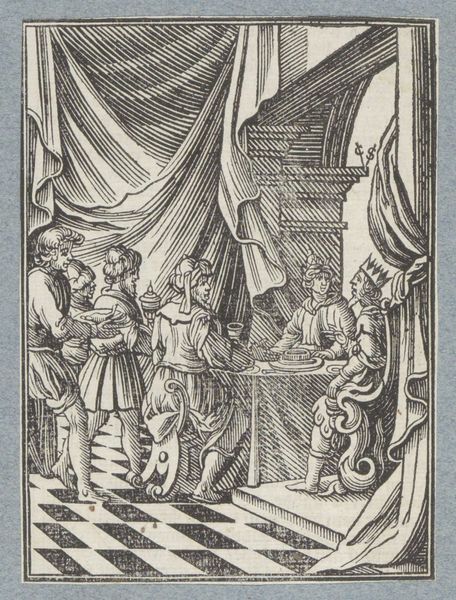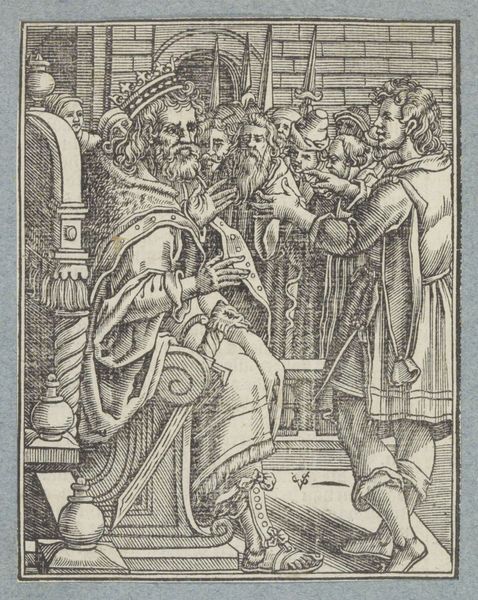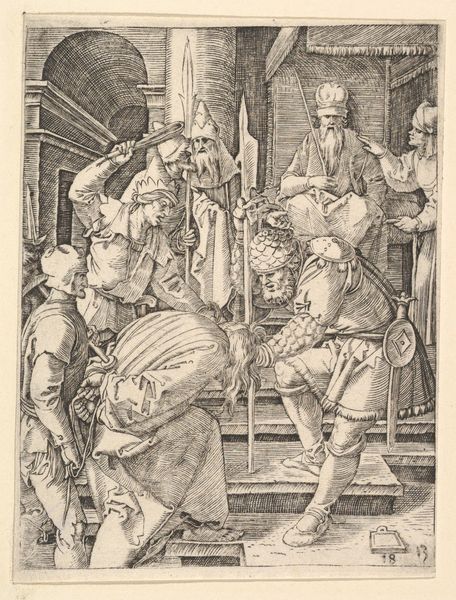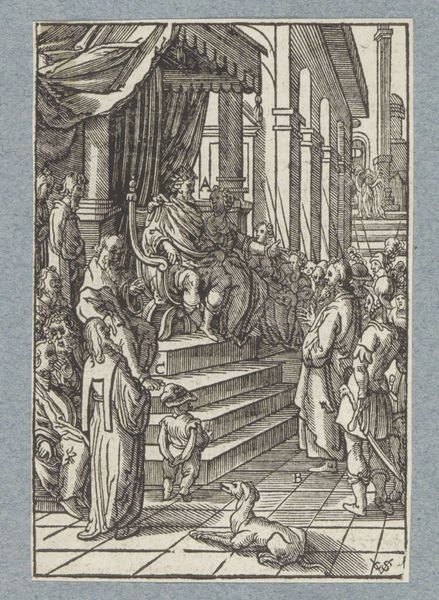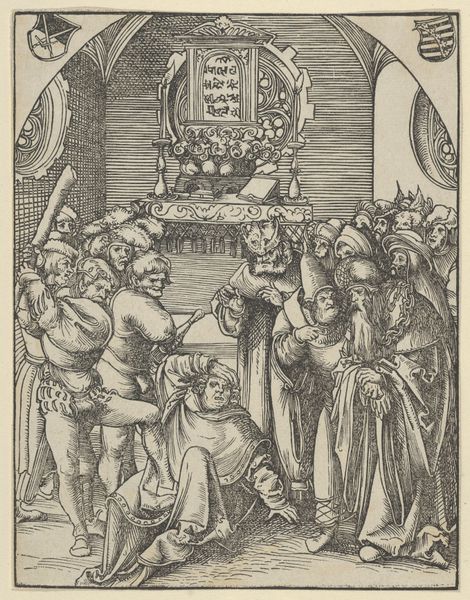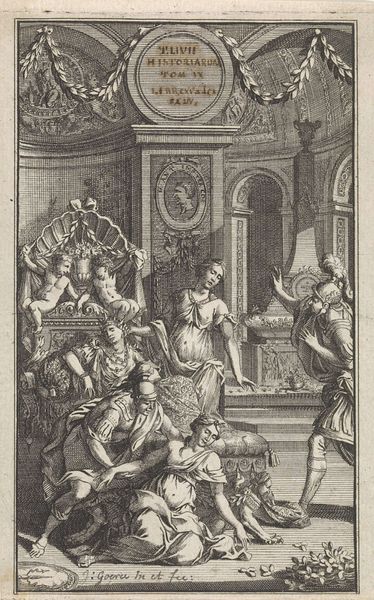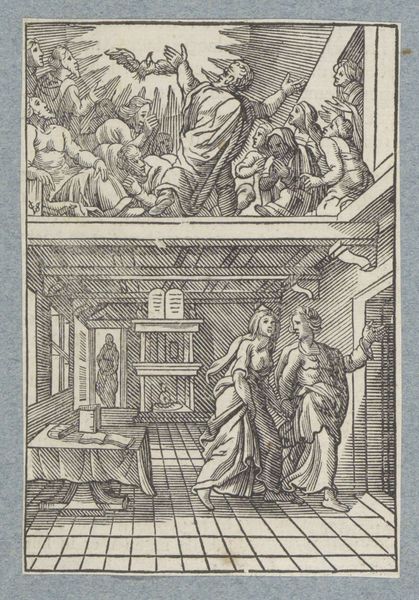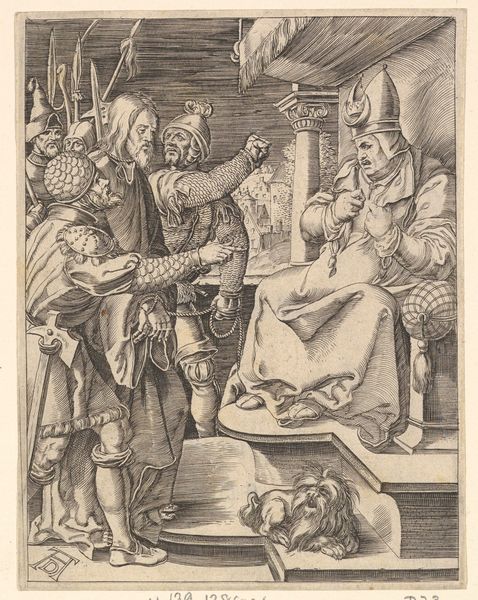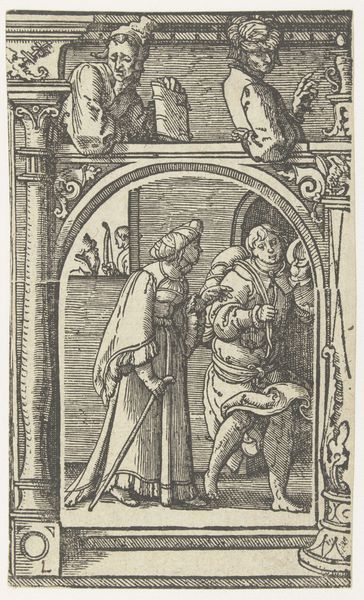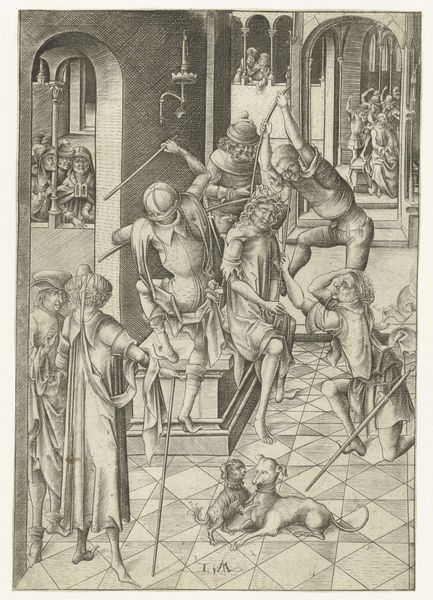
print, engraving
#
baroque
# print
#
figuration
#
history-painting
#
engraving
Dimensions: height 109 mm, width 87 mm
Copyright: Rijks Museum: Open Domain
Editor: So this engraving, "Mordecai of Haman Before Ahasuerus" by Christoffel van Sichem II, dates back to the mid-17th century. It’s intensely detailed for a print, and almost feels theatrical with its crowded composition. What strikes you when you look at this work? Curator: The potency of visual language. Look how Sichem uses spatial dynamics and figural arrangement to narrate the story. What biblical scene does it evoke? Editor: It's from the Book of Esther, isn't it? Where Mordecai refuses to bow to Haman? Curator: Precisely. Sichem isn't merely illustrating scripture; he's offering a commentary on power, piety, and persecution. Notice how King Ahasuerus is elevated on the dais, clad in Romanized armor; this symbolizes worldly authority, while Mordecai, kneeling, represents moral integrity. How does the engraver reinforce this contrast through the composition itself? Editor: Mordecai is lower, smaller…more vulnerable, certainly. It emphasizes his defiance against this powerful king. Curator: Yes. And consider the symbolic weight of Haman’s absence! This visual omission underscores Mordecai's triumph of character – he is vindicated by his very presence before the King. Sichem presents a powerful lesson using the visual codes that resonated with his contemporaries. How relevant are the lessons of moral courage that this work of art teaches us today? Editor: That’s a really powerful idea…how the image reinforces a story that is timeless, and relevant even today. I hadn't considered it in that light. Curator: These early prints served a didactic function and remain incredibly powerful cultural artifacts, encapsulating a complex history in a single image. Editor: Thank you. This has reshaped how I see these older artworks, beyond just pretty pictures to vessels of layered meanings!
Comments
No comments
Be the first to comment and join the conversation on the ultimate creative platform.
